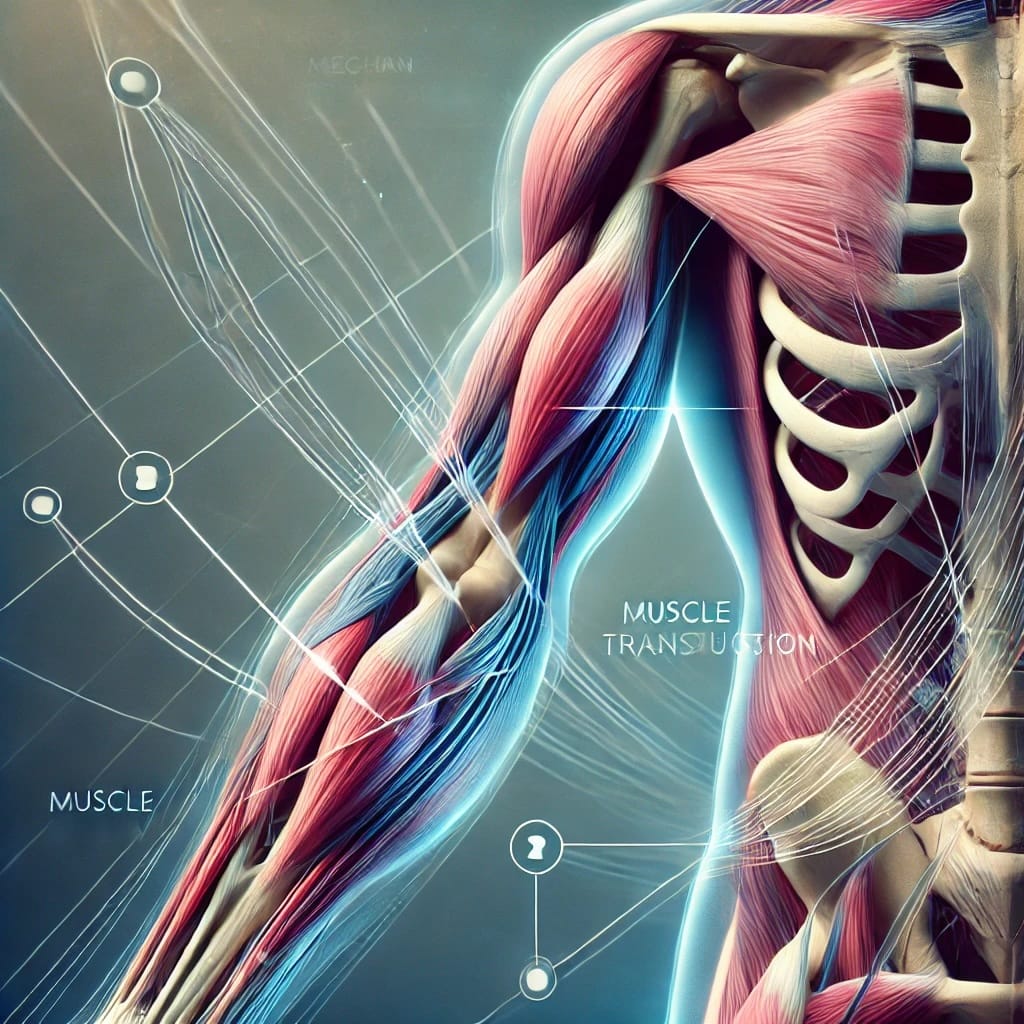Understanding Mechanotransduction: The Pathway to Enhanced Tendon and Muscle Synthesis

Mechanotransduction is a biological process that translates mechanical stimuli into biochemical signals, ultimately influencing cellular behavior and tissue adaptation. Essentially, when we provide adequate load to our tissue, tendon, bone, etc.; this stimulus leads to a chemical process to signal growth. This process is pivotal in the context of the tendon and muscle synthesis, as it drives the body’s response to physical loading and exercise. When tissues such as muscles and tendons experience mechanical load, mechanosensors within the cells are activated. These sensors trigger intracellular signaling cascades that lead to the expression of genes responsible for protein synthesis, cellular growth, and repair.
There are various forms of loading and 'all' loading tempos, schemes, and progressions will lead to mechanotransduction if the intensity or volume is great enough to elicit stimulus. Listed below are a few options that have specific merits and limitations to be used and certain times of pre-season, in-season, or off-season loading.
- Accentuated eccentrics, a training method involving a controlled, slower lowering phase of an exercise, play a significant role in enhancing mechanotransduction. During eccentric contractions, muscles generate greater force under tension, leading to increased mechanical stress on the tissue. This heightened stress amplifies the mechanotransductive signals, promoting a more robust anabolic response. Studies have shown that eccentric loading can lead to greater increases in muscle mass and tendon stiffness compared to those of concentric or isometric contractions alone, making it an effective strategy for rehabilitation and performance enhancement (Franchi et al., 2017).
- Long-duration isometrics, where a muscle is held in a fixed position under load for an extended period, also contribute to improved tendon and muscle synthesis. This type of training enhances mechanotransduction by maintaining a constant mechanical signal over time, allowing for sustained activation of anabolic pathways. The prolonged tension facilitates collagen synthesis in tendons and increases muscle cross-sectional area, thereby strengthening the entire musculotendinous unit. This approach is particularly beneficial in injury prevention and recovery, as it can help build resilience in tendons and muscles without excessive movement (Lum & Barbosa, 2019).
- Overreaching isometrics, which involve maximal or near-maximal contractions against an immovable resistance, further enhance the mechanotransductive process. These intense efforts create high levels of tension within the muscle fibers and tendons, leading to significant mechanical loading. The resulting stress not only triggers hypertrophic responses but also improves neural drive and motor unit recruitment, which are essential for force production. The repetitive application of such intense stimuli can lead to substantial gains in muscle strength and tendon robustness, particularly in athletes looking to optimize performance. Additionally, there is limited muscle damage due to the reduction in the eccentric and concentric phases of exercise. (Häkkinen et al., 1996).
- Plyometric exercises, characterized by rapid stretching followed by explosive contractions, are another key component in optimizing mechanotransduction. Plyometrics improve the rate of force absorption and development by enhancing the stretch-shortening cycle of muscles and tendons. The rapid loading and unloading cycles increase the sensitivity of mechanosensors, leading to quicker and more potent signaling responses. This type of training not only boosts power output but also improves the tendons’ ability to absorb and transmit forces efficiently, reducing the risk of injury during high-intensity activities (Markovic & Mikulic, 2010).
In conclusion, understanding and leveraging the principles of mechanotransduction through specific loading protocols like accentuated eccentrics, long-duration isometrics, overreaching isometrics, and plyometrics can significantly enhance tendon and muscle synthesis. These methods are not only valuable for athletic performance, but also for injury prevention and rehabilitation. By strategically applying more mechanical stimuli, we can optimize the body’s adaptive responses, leading to stronger, more resilient musculoskeletal tissues.
References:
1. Franchi, M. V., et al. (2017). Eccentric vs. concentric training: Greater muscle hypertrophy from eccentric contractions. Journal of Applied Physiology, 122(4), 926-933.
2. Lum, D., & Barbosa, T. M. (2019). Effects of isometric training on muscle strength and tendon stiffness. Journal of Science and Medicine in Sport, 22(6), 644-647.
3. Häkkinen, K., et al. (1996). Neuromuscular adaptation to explosive strength training. Journal of Applied Physiology, 74(1), 123-129.
4. Markovic, G., & Mikulic, P. (2010). Neuro-musculoskeletal and performance adaptations to lower-extremity plyometric training. Sports Medicine, 40(10), 859-895.
5. Beyer, R., et al. (2015). Mechanotransduction in tendon and muscle tissue: Response to mechanical loading. Sports Medicine and Arthroscopy Review, 23(3), 140-145.
